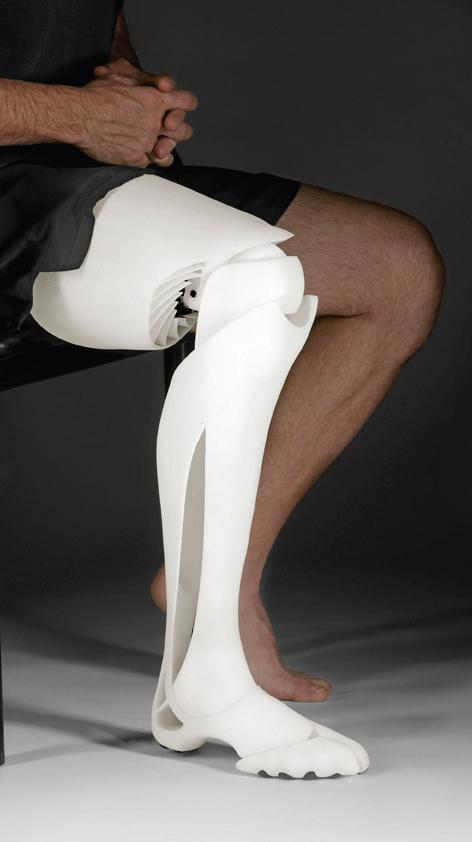This morning Gartner, the technology research and advisory firm, located in Stamford Conn., issued a brand new report covering the 3D printing industry. Gartner has issued several reports in the last 12 months covering the growth trends of the industry, but this report is a little different.
Although the latest report covers growth trends, it also delves into some major hurdles the industry may face in the next two to three years. Morally and ethically 3D printing could be the center of many hot debates. The report itself is broken down into several sections, but centers around the intersection between 3D printing and the medical community.
 There are already two companies, Organova in the United States, and Regenovo, in China, which have machines capable of printing out both human and nonhuman cells to make three dimensional structures. Organova, in fact, claims they will have a 3D printed human liver by year’s end. This technology is progressing quickly and with it will come a whole slew of moral and ethical debates. One such debate may center around the use of nonhuman cells within a human printed body part, which would likely spark conservative outcry.
There are already two companies, Organova in the United States, and Regenovo, in China, which have machines capable of printing out both human and nonhuman cells to make three dimensional structures. Organova, in fact, claims they will have a 3D printed human liver by year’s end. This technology is progressing quickly and with it will come a whole slew of moral and ethical debates. One such debate may center around the use of nonhuman cells within a human printed body part, which would likely spark conservative outcry.
Away from the biological aspects of medical uses is another area which will grow at a staggering pace in the coming years. That’s the prosthetics market. Already there have been several 3D printed limbs, and facial structures. As this market grows so will its integration within the healthcare system. The report states the following:
As 3D printing technology continues to mature, its ability to build customized human anatomical parts has pervasive appeal in medical device markets — especially in economically weak and war-torn regions — where it addresses high demand for prosthetic and other medical devices. In addition, increasing familiarity within the material sciences and computer-augmented design services sectors, and integration with healthcare and hospitals, will further increase demand from 2015 onwards.
Shifting away from the medical field, we will see major changes within the retail industry worldwide. Gartner estimates that within four years, at very minimum, seven out of the top 10 retailers will be using 3D printing to fulfill custom orders, as well as creating new market categories to take advantage of the technology.
We also expect to see 3D copying services and 3D printing bureaus emerge where customers bring 3D models to a retailer or provider and have increasingly high-end parts and designs printed, not just in plastics but in materials including ceramics, stainless steel, and cobalt and titanium alloys, said Miriam Burt, Research VP at Gartner
Even though the the total market value of the industry will still be rather small, by 2018, the damage caused by the 3D printing to intellectual property will be staggering. Gartner estimates damages by 2018 exceeding $100 billion annually.
The report indicates that clearly 3D printing will have far reaching effects, turning many industries upside down, while setting up a platform for many debates. Business owners need to be able to quickly adapt to a changing tide, and not be afraid to embrace the changes heading our way.
Discuss this latest report: https://3dprintboard.com/showthread.php?1573-Gartner-3D-BioPrinting-Will-Change-the-World
Subscribe to Our Email Newsletter
Stay up-to-date on all the latest news from the 3D printing industry and receive information and offers from third party vendors.
You May Also Like
Gorilla Sports GE’s First 3D Printed Titanium Cast
How do you help a gorilla with a broken arm? Sounds like the start of a bad joke a zookeeper might tell, but it’s an actual dilemma recently faced by...
Nylon 3D Printed Parts Made More Functional with Coatings & Colors
Parts 3D printed from polyamide (PA, Nylon) 12 using powder bed fusion (PBF) are a mainstay in the additive manufacturing (AM) industry. While post-finishing processes have improved the porosity of...
$25M to Back Sintavia’s Largest Expansion of Metal 3D Printing Capacity Since 2019
Sintavia, the digital manufacturing company specializing in mission-critical parts for strategic sectors, announced a $25 million investment to increase its production capacity, the largest expansion to its operations since 2019....
Velo3D Initiates Public Offering in a Bid to Strengthen Financial Foundations and Drive Future Growth
Velo3D (NYSE: VLD) has been among a number of publicly traded 3D printing firms that have attempted to weather the current macroeconomic climate. After posting a challenging financial report for 2023,...































